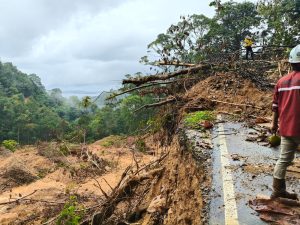Semarang – The government has officially issued Government Regulation (PP) Number 27 Year 2025 on the Protection and Management of Mangrove Ecosystems. This regulation is considered a significant milestone in the effort to protect mangrove forests, which are increasingly threatened by industrial expansion, settlements, and the creation of ponds.
However, marine experts believe that regulations alone are not enough. Land conversion remains a significant challenge in mangrove protection, often resulting from inadequate field supervision and overlapping spatial plans.
“Mangroves are not only about the environment, but also about the welfare of coastal communities and contribution to climate change mitigation,” said Denny Nugroho Sugianto, Professor of the Faculty of Fisheries and Marine Science at Diponegoro University, on Wednesday, 23 July.
Denny, who is also the Head of Undip’s SDGs Centre, assessed that this regulation was born from a long process involving scientific research, spatial studies, and public consultation. He emphasised that the drafting of this PP employs a landscape approach, moving from upstream to downstream, and prioritises collaboration among the state, indigenous peoples, the business sector, and academics.
PP 27/2025 stipulates that mangrove management includes aspects of planning, utilisation, damage control, maintenance, as well as supervision and administrative sanctions. The role of the community is stated as a central part of implementation, including empowerment and incentives.
Indonesia currently has around 3.3 million hectares of mangrove forests, or 22.4 per cent of the world’s total mangroves. In the context of climate mitigation, mangrove forests in Indonesia can absorb an average of 52.85 tonnes of CO₂ per hectare per year, with a national potential of 170 million tonnes of CO₂ per year.
“When mangroves are lost, the stored carbon is released into the atmosphere. This means that protecting mangroves also means preventing massive emissions,” said Denny.
However, land use change in coastal areas is a crucial issue that can hamper the effectiveness of regulations. In several areas, the practice of destroying mangroves continues, primarily for the benefit of ponds, tourism, and property development projects.
“This PP provides a clear direction, but its implementation will depend on regional supervision and cross-sector commitment,” he said.
He hopes that PP 27/2025 will not only be a legal document but also consistently implemented to ensure the sustainability of the mangrove ecosystem while improving the welfare of coastal communities. (Hartatik)
Banner photo: Khun Ta/shutterstock.com















